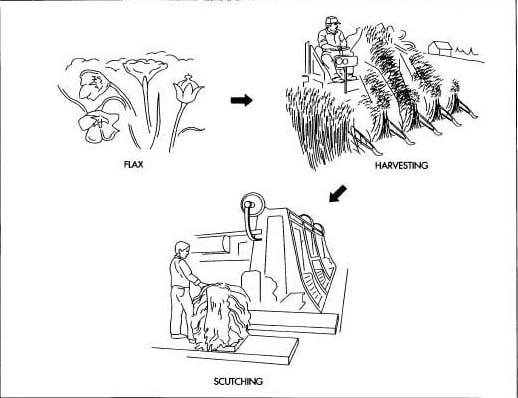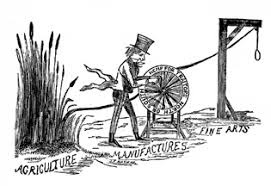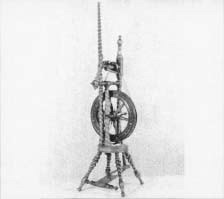|
Cultivating It takes about 100 days from seed planting to harvesting of the flax plant. Flax cannot endure very hot weather; thus, in many countries, the planting of seed is figured from the date or time of year in which the flax must be harvested due to heat and the growers count back 100 days to determine a date for planting. In some areas of the world, flax is sown in winter because of heat in early spring. In commercial production, the land is plowed in the spring then worked into a good seedbed by discing, harrowing, and rolling. Flax seeds must be shallowly planted.
Once flax is harvested and the fiber removed from the stalks, a scutching machine removes the broken outer layer called shives. seed must be covered over with soil. Machines may also plant the seed in rows. Flax plants are poor competitors with weeds. Weeds reduce fiber yields and increase the difficulty in harvesting the plant. Tillage of the soil reduces weeds as do herbicides. When the flax plants are just a few inches high, the area must be carefully weeded so as not to disturb the delicate sprouts. In three months, the plants are straight, slender stalks that may be 2-4 ft (61-122 cm) in height with small blue or white fibers. (Flax plants with blue flowers yield the finest linen fibers. |
|



